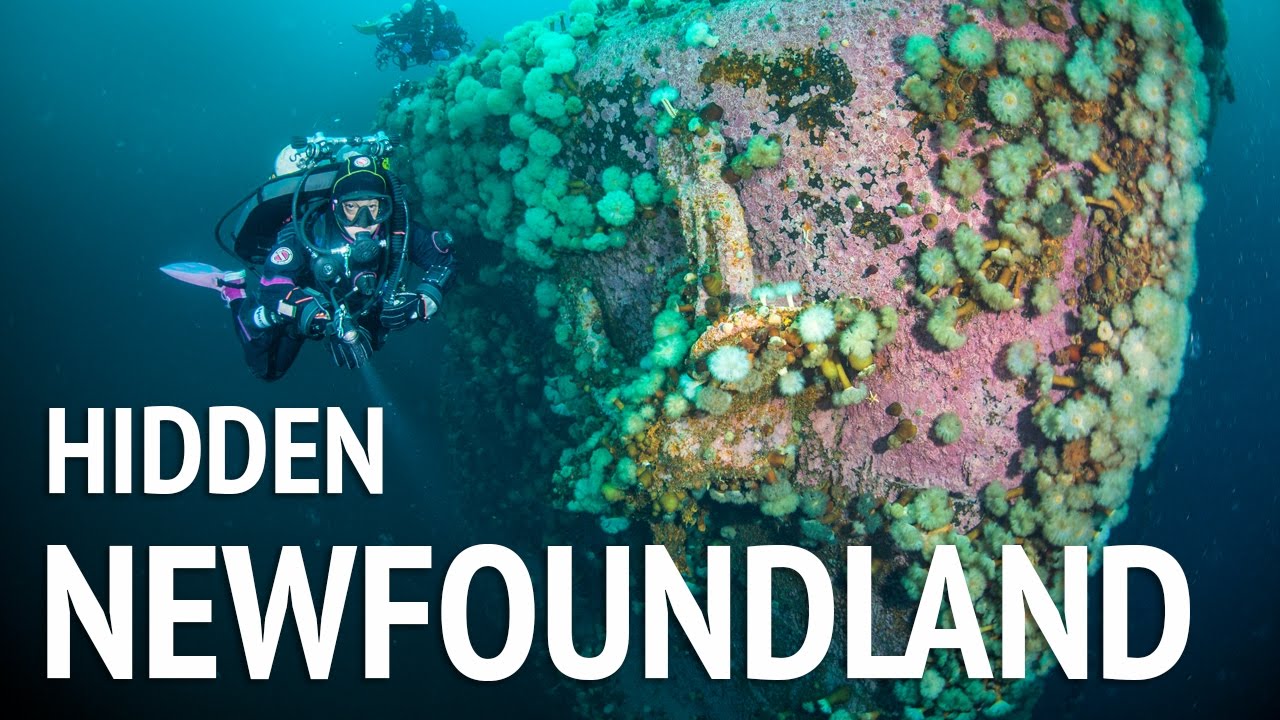Where history and diving collide
Shades of aqua and turquoise swirl together below the airplane like a scene from a Caribbean postcard. The Atlantic Ocean glitters below my window, and I feel like I’m touching down in a tropical place, but I’m worlds away from the sunny islands in the south.
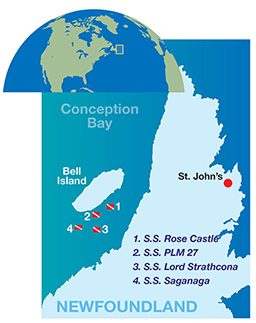
Resting just below the Canadian Arctic, the province of Newfoundland and Labrador is a far cry from your typical vacation destination. While Canada has a wide range of climates, rarely will you find an area like this that can go from sun to rain to snow to fog all in a matter of hours.
Surrounded by the frigid North Atlantic, this seaside province is the perfect mixture of sweeping coastal vistas and cozy little fishing villages. There’s a reason 520,000 residents call it home: They can’t get enough of the area’s natural beauty.
Those who travel for the adventure will be dazzled by Newfoundland’s many options, from whale watching via a Zodiac boat to iceberg spotting along the dramatic coastlines. Divers have even more to discover.
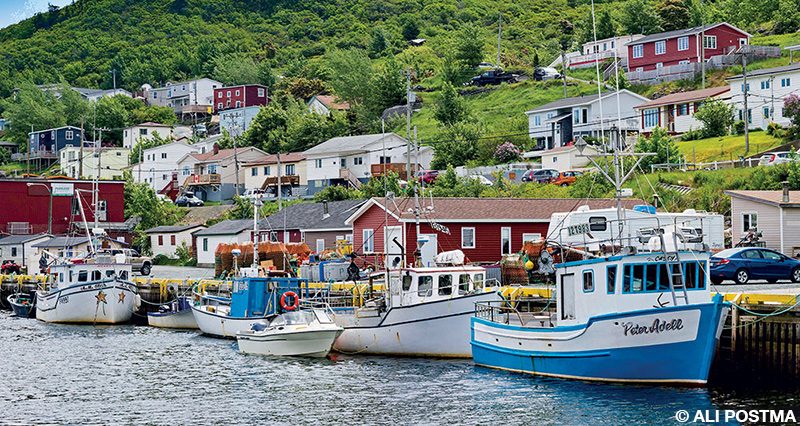
Diving in Newfoundland
I had heard many tales about the incredible diving in Newfoundland, so when my travels landed me in this northern province on the eastern coast of Canada, I was excited about what I would find and what the underwater world would be like there.
Thanks to its relatively sheltered location and lack of ocean current, Conception Bay is one of the main dive areas in Newfoundland. The diving here is chilly but full of history, and no place is more historic than Bell Island, a small mining island that’s a mere stone’s throw from the coast.

People first mined iron ore on Bell Island in the 1890s. It became such a valuable commodity that the economy and demand expanded, and it wasn’t long before Bell Island turned into one of the largest producers of iron ore in North America.
When World War II broke out, iron ore from Bell Island was a major contribution to the Canadian production of vehicles and munitions for the Allied forces. To slow down a supplier of the materials for steel and hamper the Allies’ war effort, German forces struck and sank four iron ore carriers in the vicinity and making Bell Island one of the few locations in North America directly attacked during the war.
From the moment I jumped off the boat to when I glimpsed each sunken iron ore carrier throughout my five-day diving excursion, I was blown away by the myriad things to see here. Bell Island was an underwater masterpiece filled with life, color and texture.
Cold But Clear
To say the water in Newfoundland is chilly doesn’t even begin to describe the needles-to-the-skin ache you feel when you first plunge your head under the surface. Trying to ignore the cold water as I swam along the decks of the SS Lord Strathcona, PLM 27, SS Saganaga, and SS Rose Castle, I enjoyed visibility that seemed to go on forever. The water was so clear it made me want to take a drink.
Every dive day started with a scenic boat trip to the dive site and a riveting dive briefing complete with 3D maps and a short question and answer session. Then we would split into teams and take to the water.
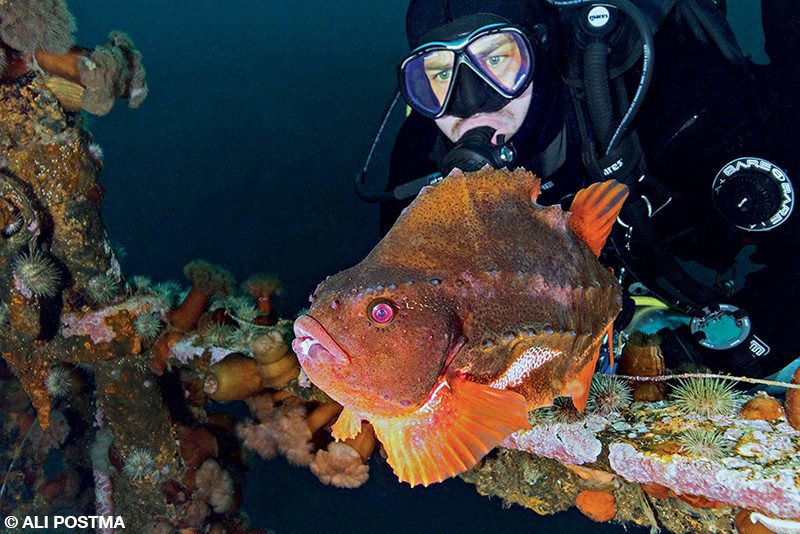
Wearing ample dive gear, I always looked forward to leaving gravity behind and taking a giant stride into the North Atlantic. As I descended the anchor line one pull at a time, I savored the suspended-in-space sensation. The water was so transparent that it gave me a slight feeling of vertigo. I wasn’t alone in my enthusiasm for the incredible visibility — my husband and dive buddy, Joey, was also starry-eyed with excitement.
As we descended deeper, past floating ctenophores and pulsating jellies, my eyes connected with the wreck we were visiting on that day. Each ship had a massive superstructure that danced in the sunlight. The wrecks dwarfed us as we weaved around the towering metal frames.
The deepest of the four shipwrecks is the SS Rose Castle, which we visited several times during our trip. Resting between 100 and 150 feet, this mammoth 459-foot ship is considered the jewel of the Bell Island shipwrecks, in part because of its pristine condition but also because of the presence of soft coral and basket stars that are uncommon on the other wrecks.
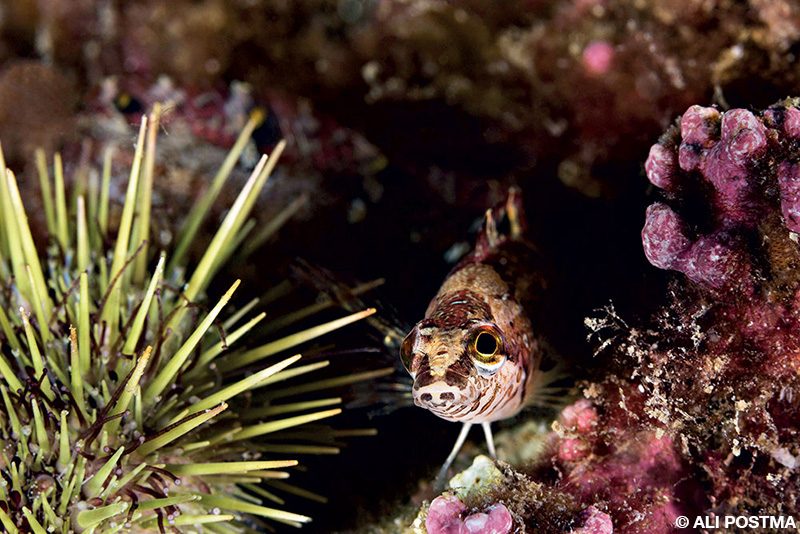
Walls, corridors and swim-throughs were all over this sunken time capsule. As Joey and I navigated the underwater maze, we made a point to check out the different chains, guns and miscellaneous objects that had gone down with the ship. Some of these artifacts seemed to be in the same spot where they landed in November 1942, when a German U-boat torpedoed and sank the vessel.
The shallowest of the shipwrecks was the PLM 27, owned by the Paris-Lyon-Marseille railway company. At a depth ranging from 50 to 100 feet, the relative shallowness made for convenient exploration. Joey and I made a point to check out the rigging, the torpedo hole, the bow and what remains of the superstructure of the ship. The biggest downfall of the PLM 27 is that the vessel is the most damaged of the four Bell Island wrecks. Being so shallow, the upper deck has suffered significant damage from an iceberg or two over the years.
While some parts of the PLM 27 lie in ruins, others are still perfectly intact. My favorite part to explore was the large propeller, which was the most impressive feature on the wreck and made for a fantastic photo op.
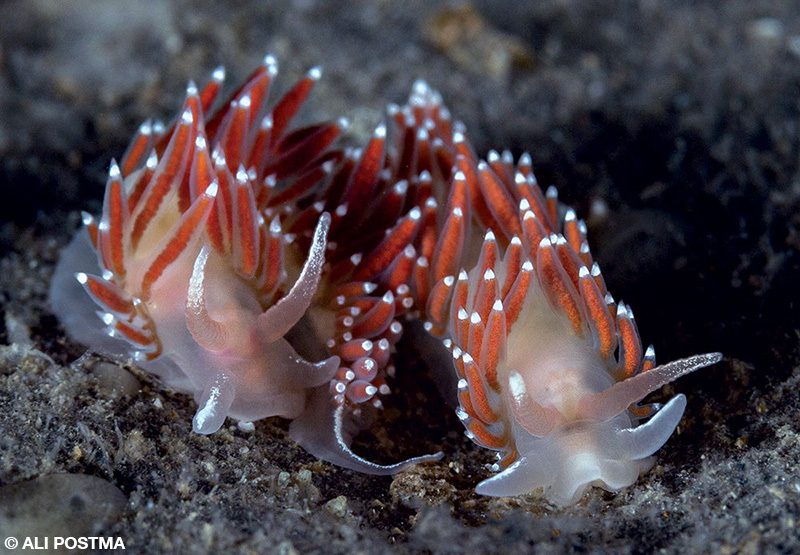
Following the first few days of diving, after getting over my jaw-dropping encounter with each iron ore shipwreck, I was able to acquaint myself with the rest of Newfoundland’s marine life, such as sea stars, crabs, anemones, lumpfish, flounder, jellyfish and cod. This coldwater paradise was jam-packed with scales and tails.
Carpets of plumose anemones and pink coralline algae coat every square inch of the ships. Appearing as if crafted from glass, the anemones were the daintiest things I had ever seen. Never have I witnessed such beauty and fragility all wrapped into a single entity. Where one collection of anemones stopped, another began, with their colors jumbling together. There was so much life it was like a dreamy, underwater garden.
Following the theme of magical coldwater critters, Joey and I had the good fortune of an up-close-and-personal lumpfish encounter on our last day of diving. Ruby red and curious to no end, the lumpfish appeared to be thoughtfully calculating behind his inquisitive eyes. I carefully lowered myself so that my mask was eye level with him and watched as he tried to decide if I was friend or foe.
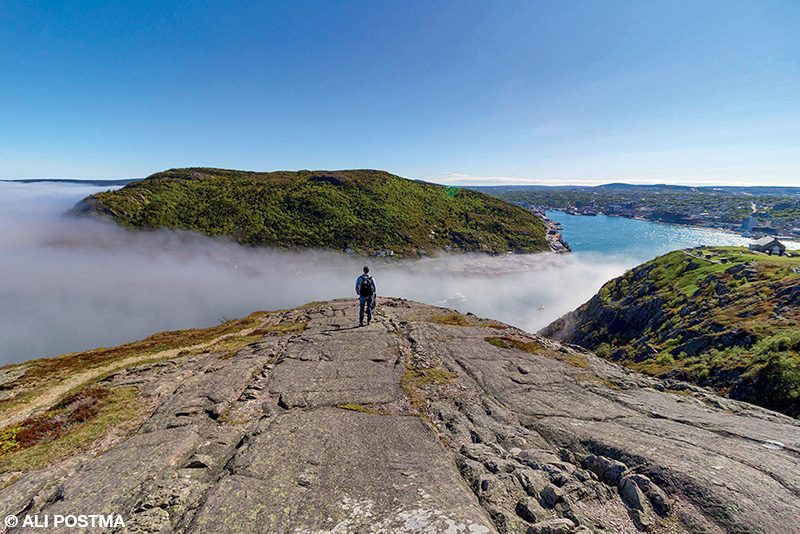
An incredible week of diving in Newfoundland was over much too quickly. We enjoyed shipwrecks, wildlife and icebergs to our heart’s content. As worried as I was about frostbitten toes, the diving was worth any discomfort. Home to the only collection of World War II shipwrecks in Canadian waters, Newfoundland provided a surreal diving experience at the historic landmarks.
This island gave me everything I wanted in a scuba destination: photogenic landscapes, underwater excitement and a longing to return soon. This hidden Canadian gem is proof that incredible diving exists far from the equator.
Explore More
© Alert Diver — Q1 2020
